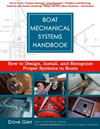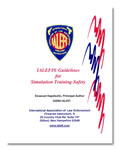Linnda Durre', Ph.D., Licensed Psychotherapist, (FL License #MH6058) is an expert witness, psychotherapist, family counselor, intern supervisor, international speaker, corporate trainer, author, business consultant, adjunct college professor, and a magazine, Internet, and newspaper columnist. Her four areas of court expertise are Family Law, Personal Injury Law, Employment Law, and Criminal Law.
Litigation Support: With over 49 years of experience, she consults to attorneys and has been qualified as an expert witness in 12 states - NY, CA, FL, AL, CT, AR, AZ, TN, WA, IA, OH, GA - in the areas of Personal Injury, PTSD, Family and Couples Counseling, Divorce, Child Custody, Relocation, Drug and Alcohol Counseling, Sexual Harassment, Sexual Abuse by Psychotherapists, as well as Age, Race, Gender, and Sexual Orientation Discrimination. Her 400-page doctoral dissertation and research in the latter area was cited to pass legislation in several states.
Dr. Durre' has hosted and produced four radio shows, two of which were call-in advice shows - "The Dr. Linnda Durre' Show" on WDBO in Orlando (a Cox station) and "Let's Talk with Dr. Linnda Durre' on an NPR station in New York, and two radio interview shows. Her last show was a daily hour-long podcast, entitled, "Linnda Durre' Interviews" Dr. Linnda Durre' has hosted and produced two call-in advice TV shows, including being selected in a national search of 200 applicants, to host, "Ask The Family Therapist," on America's Health Network (AHN), which was associated with Mayo Clinic and each show aired daily for two hours from Universal Studios Orlando. She was vetted by Mayo Clinic and America's Health Network.
She has appeared on Oprah, 60 Minutes, O'Reilly (twice), Today Show, Good Morning America, Canada AM, Daytime, Donahue (twice), Sally Jessy Raphael, People Are Talking, Home Show, Hour Magazine, Home and Family Show, Disney Channel, and the local and/or national news on NPR, PBS, CBS, ABC, NBC, CW, and Fox.
Dr. Durre' has been interviewed, cited, and/or quoted by the NY Times, LA Times, Forbes, WSJ, IBD, Business Week, SF Chronicle & Examiner, Toronto Globe & Mail, Albany Times Union, Atlanta Journal Constitution, Orlando Business Journal, Orlando Sentinel, Parade Magazine, Alternative Medicine Magazine, CNN Online, Washington Parent Magazine, Screen Actor Magazine, Florida Magazine, Pasadena Star News, Orlando Magazine, Women's Health Magazine, and others.
View Linnda Durre's Consulting Profile.
By: Dr. Linnda Durré
Here's how businesses can institute new polices requiring all employees to participate in fun and informative workshops to overcome ageist assumptions about younger workers or seniors. Get rid of prejudices and limiting beliefs that prevent camaraderie, productivity, and profits.
By: Dr. Linnda Durré
Age discrimination is a global phenomenon and perpetuates unfair, unjust and untrue stereotypes of seniors. Corporations think they are saving money by replacing older workers with younger ones. Cheaper doesn't mean better. Widespread lawsuits claiming and proving ageism are a way seniors can fight age discrimination and change laws.
By: Dr. Linnda Durré
If not dealt with, addiction can be a greased pole to self-destruction and bankruptcy. For people in powerful positions, such as CEOs, doctors, executives and company founders, attempting to conduct business without the use of their full faculties is a very dangerous proposition.
By: Dr. Linnda Durré
As a business and corporate consultant and psychotherapist , I've analyzed, worked with, and consulted with many difficult bosses over the years.
By: Dr. Linnda Durré
Treating people equally, focusing on the work, honest communication and doing what you love -- four basic values that legendary record producer Sir George Martin, "the CEO of The Beatles," used with the most successful, creative, zeitgeist-changing, consciousness-raising band in the history of musi












 Dr. Michael R. Klein, Jr., M.D., specializes in Orthopedic Surgery and is a founding member and the first Medical Director of Northern California Orthopedic Centers. He was involved with the development of the orthopedic section of the Level II Trauma Center at
Dr. Michael R. Klein, Jr., M.D., specializes in Orthopedic Surgery and is a founding member and the first Medical Director of Northern California Orthopedic Centers. He was involved with the development of the orthopedic section of the Level II Trauma Center at  Martyn C. Thake is an expert specializing in Motorsports, Motorsport Special Events, and Motorsport TV Production Set Safety. With more than 40 years of comprehensive experience, he has worked on more than 100 facilities around the world.
Martyn C. Thake is an expert specializing in Motorsports, Motorsport Special Events, and Motorsport TV Production Set Safety. With more than 40 years of comprehensive experience, he has worked on more than 100 facilities around the world.

